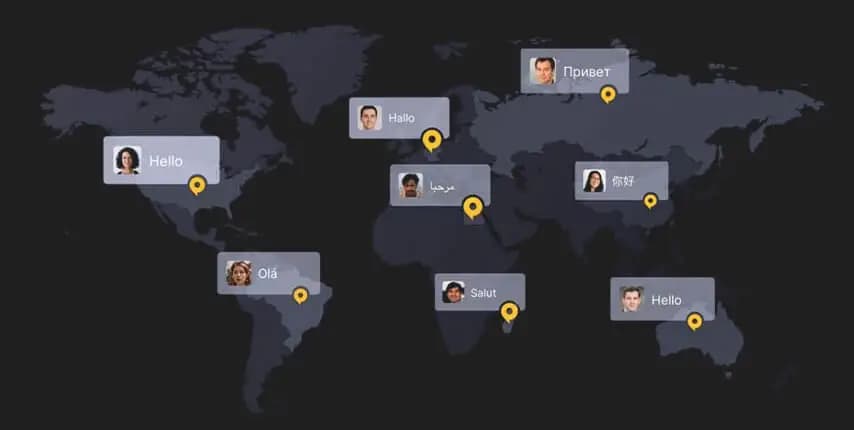E-commerce Localization: Expanding Your Global Reach
E-commerce localization plays the greatest role in the global customer cycle. Let’s find out how and why it can bring you the most loyal customers.
The Vital Role E-commerce Localization Plays in Global Marketing Campaigns for Black Friday
Investing in e-commerce localization signals a sincere commitment to understanding and connecting with a global audience, especially as the Black Friday frenzy is here. Tailoring marketing materials to suit local tastes enhances relatability, impact, and persuasion. This targeted localization approach fosters deeper emotional connections, driving customer engagement. When you localize your content with experts, your marketing message becomes a seamless experience that resonates across borders.
E-commerce localization plays a pivotal role in building trust and credibility, particularly in the lead-up to Black Friday sales. Adapting marketing content to align with local preferences demonstrates respect for cultural diversity, creating a sense of familiarity with your audience. When consumers feel understood, trust and acceptance of your products or services follow. Localization also helps avoid misunderstandings arising from language or cultural differences, eliminating barriers and forging stronger connections. This trust becomes the bedrock for long-term customer relationships and loyalty.
How E-commerce Localization Could Help in Maximizing Black Friday ROI?
Black Friday is one among hundreds of events that can bring your brand lots of revenue. Each region has lots of events and taking advantage of them can help your brand reach more loyal customers.
Mark these events on your global sales calendar, look which one would resonate with your global customers and make sure to include it in your plan:1. India – Embrace the vibrant festivities of Diwali: The Festival of Lights, typically celebrated in November. This period marks one of the busiest shopping seasons in India, offering a prime opportunity for e-commerce engagement.
2. China – Singles Day on November 11th, a major shopping extravaganza celebrated in China. Alibaba, the e-commerce powerhouse, leverages this day to outpace the combined revenue of Black Friday and Cyber Monday.
3. The Middle East and Africa – Navigate the unique landscape of Ramadan, where global brands unveil special deals during this significant period. Given that Ramadan is determined by lunar phases, it’s essential to confirm the specific dates each year.
4. Australia – Experience the holiday season “down under” with Click Frenzy, a major November shopping event. Similar to Cyber Monday in the US, Click Frenzy hosts an online mega-sale featuring substantial discounts and exclusive offers from retailers.
5. The United States and Beyond – While Black Friday and Cyber Monday are synonymous with the American market, their influence is rapidly expanding globally. Countries like Spain, Colombia, Japan, Ireland, the UK, Italy, Germany, Chile, and Portugal have embraced their own iterations of these iconic shopping days. Stay ahead of the curve by aligning your e-commerce strategy with these global celebrations.
Primary Benefits of E-commerce Localization When Globalizing Your Brand
1. Connecting at a Personal Level: One of the primary advantages of e-commerce localization is the ability to connect with consumers at a personal and cultural level. By speaking the language of your target audience, both figuratively and literally, you create a sense of trust and familiarity. Imagine the impact of a Black Friday promotion that not only offers great deals but also communicates in a way that feels native to the customer – it’s a recipe for success.
2. Tailoring Promotions for Local Tastes: Black Friday is synonymous with jaw-dropping discounts and promotions. However, what resonates in one market might not have the same impact in another. E-commerce localization allows you to customize your Black Friday deals to align with local preferences and expectations. Whether it’s the format of the promotion, the products on sale, or the messaging tone, adapting to local tastes can skyrocket your Black Friday sales.
3. Navigating Regulatory Challenges: As you expand globally, navigating the complex web of international regulations becomes crucial. E-commerce localization ensures that your business complies with local laws and regulations, avoiding potential legal pitfalls. This not only protects your brand but also builds a positive image among consumers who appreciate businesses that respect local norms.
4. Enhancing User Experience: In the digital realm, user experience reigns supreme. An e-commerce platform that is user-friendly and culturally relevant creates a seamless shopping experience for customers. This is especially crucial during Black Friday, where a user’s ability to quickly and easily navigate your website can be the difference between a successful sale and a lost opportunity.






